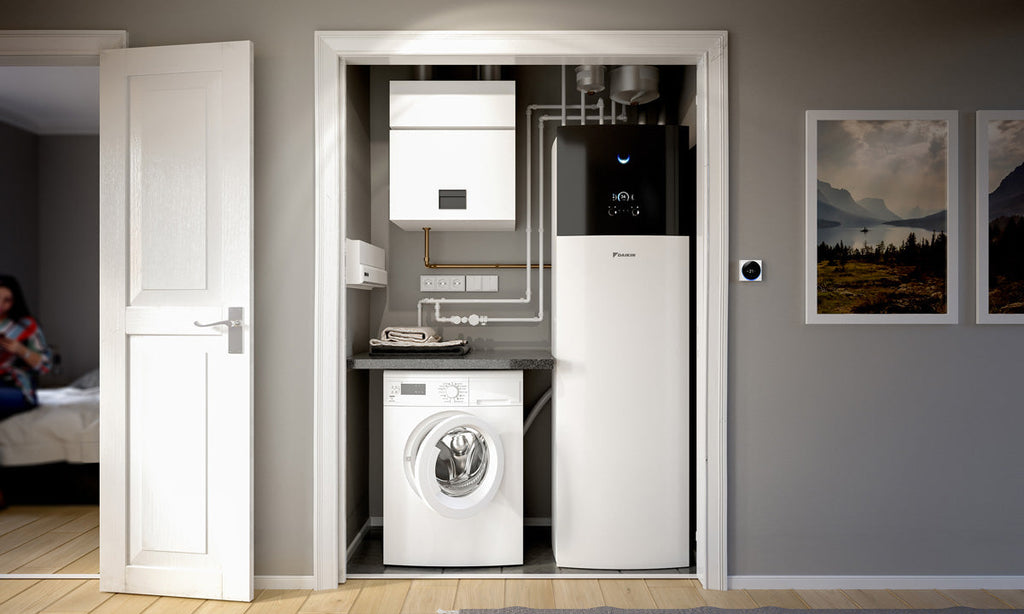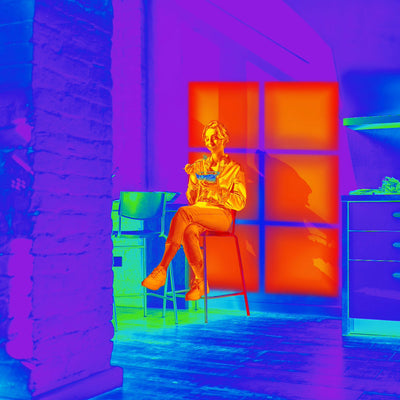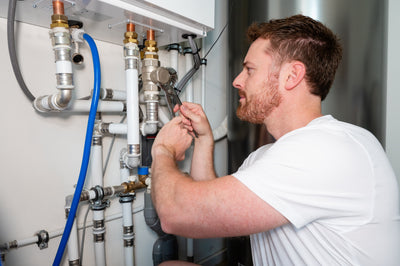Ambient Loops and 5th-Generation District Heating and Cooling: A Guide for Engineers and Consultants

With the growing demand for low-carbon heating and cooling, many developments are shifting away from traditional centralised networks and adopting ambient loops—often referred to as 5th-generation district heating and cooling (5GDHC).
This approach is rapidly becoming the preferred option for consultants, developers, and mechanical and electrical contractors who are looking for highly efficient, future-proof systems that support sustainability targets.
In this article, we’ll explain what ambient loop systems are, their key benefits, and the types of projects where they can add the most value.
What Is an Ambient Loop?
An ambient loop is a low-temperature heat network that circulates water at or near ambient temperature (typically 10 °C to 30 °C). Unlike traditional district heating networks that supply hot water at 60–80 °C, ambient loops operate at much lower temperatures, significantly reducing distribution losses.
Each building—or even each apartment—connects to the network via a local water-to-water heat pump, which upgrades the loop temperature to meet heating, hot water, or cooling demand. This decentralised model means occupants benefit from individual control, while the wider network delivers much greater energy efficiency.
This principle of local heat generation and shared infrastructure is what defines 5th-generation district heating and cooling.
Benefits of Ambient Loop & 5th-Generation Heat Networks
For consultants and engineers, the advantages of specifying an ambient loop system are clear:
1. Ultra-Low Distribution Losses
Because the network runs close to ambient temperatures, heat loss through pipework is minimal—often reduced by up to 90% compared with higher-temperature networks. This also means less insulation is required, cutting capital costs.
2. High Energy Efficiency & Carbon Savings
Heat pumps working from a moderate, stable loop temperature achieve much higher efficiencies. This translates into lower operational costs and a measurable reduction in carbon emissions—helping developments meet tightening building regulations and net zero targets.
3. Waste Heat Recovery
One of the biggest advantages of 5th-generation networks is their ability to capture and redistribute waste heat. For example, cooling loads from offices, gyms, or data centres can feed heat into the loop, which can then be reused to provide hot water for residential apartments.
4. Integrated Heating and Cooling
Ambient loops can provide both heating and cooling from the same network. This dual function eliminates the need for separate chiller systems, reduces plant space requirements, and helps avoid excess heat being rejected into the urban environment.
5. Flexible Heat Sources
Ambient loop networks are not tied to one specific energy source. They can integrate:
- Air source and ground source heat pumps
- Geothermal energy
- Waste heat from industry, supermarkets, or transport systems
- Future low-carbon technologies
This flexibility makes them an excellent long-term solution for future-proofing developments.
6. Decentralised Control at Unit Level
Because each building (or dwelling) has its own heat pump, users gain individual control of heating, cooling, and hot water. For multi-occupancy buildings such as flats, this resolves a key issue with older communal heating systems where residents lacked control and often faced overheating.
Where Are Ambient Loops Most Suitable?
Ambient loop systems are particularly effective in:
- Large residential apartment blocks – Residents benefit from individual heat pumps while developers reduce distribution losses.
- Mixed-use developments – Offices, retail, gyms, and residential can all share energy, balancing heating and cooling demand.
- Urban districts and masterplans – Especially where there are opportunities to tap into waste heat from nearby infrastructure.
- Projects aiming for low-carbon compliance – Ambient loops make it easier to meet the Future Homes Standard and local planning requirements around carbon performance.
- Refurbishments and new-builds – Their modular design makes them suitable for both major retrofit projects and new developments.
Why Engineers and Consultants Should Consider 5th-Generation District Heating and Cooling
For heating engineers, M&E consultants, and developers, ambient loop networks represent the next step in delivering sustainable, efficient building services. They:
- Lower capital and operating costs
- Enable compliance with evolving regulations
- Deliver year-round comfort for occupants
- Unlock opportunities for circular energy sharing
In a market increasingly shaped by carbon reduction targets and energy efficiency requirements, understanding and specifying ambient loop technology can give your projects a competitive advantage.
Final Thoughts
Ambient loops and 5th-generation district heating and cooling systems are no longer niche—they’re becoming a proven, scalable way of designing future-ready developments.
For engineers and consultants, the message is clear: if you’re working on apartment blocks, mixed-use schemes, or urban masterplans, now is the time to consider how an ambient loop network could enhance performance, reduce emissions, and add long-term value.
Contact us to discuss ambient loop systems for your next project.


